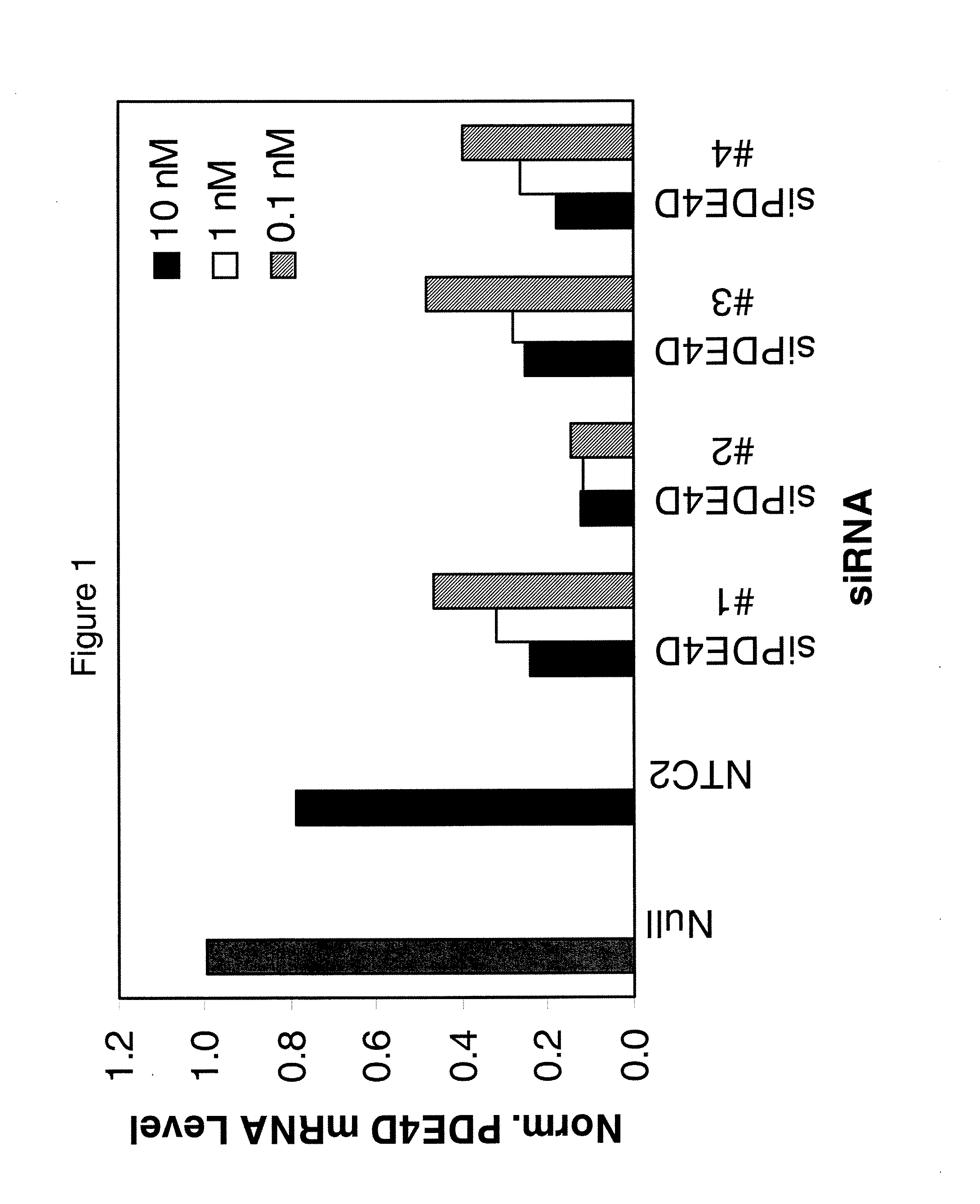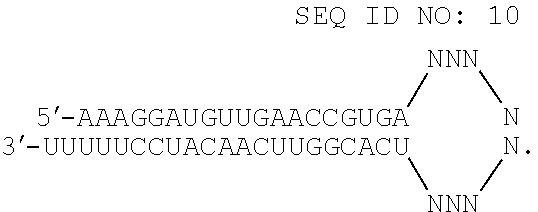RNAi-MEDIATED INHIBITION OF PHOSPHODIESTERASE TYPE 4 FOR TREATMENT OF cAMP-RELATED OCULAR DISORDERS
a phosphodiesterase and rnai technology, applied in hydrolases, biochemistry apparatus and processes, enzymes, etc., can solve the problems of eyelid thickening, eye irritation, eyelid thickening, etc., to improve the inhibition profile, prolong the action time, and improve the effect of intraocular pressure and cataract formation
- Summary
- Abstract
- Description
- Claims
- Application Information
AI Technical Summary
Benefits of technology
Problems solved by technology
Method used
Image
Examples
example 1
Interfering RNA for Specifically Silencing PDE4D in HeLa Cells
[0136]The present study examines the ability of PDE4D-interfering RNA to knock down the levels of endogenous PDE4D protein expression in cultured HeLa cells.
[0137]Transfection of HeLa cells was accomplished using standard in vitro concentrations (0.1-10 nM) of PDE4D siRNAs or siCONTROL Non-targeting siRNA #2 (NTC2) and DHARMAFECT® #1 transfection reagent (Dharmacon, Lafayette, Colo.). All siRNAs were dissolved in 1× siRNA buffer, an aqueous solution of 20 mM KCl, 6 mM HEPES (pH 7.5), 0.2 mM MgCl2. Control samples included a buffer control in which the volume of siRNA was replaced with an equal volume of 1× siRNA buffer (Null). PDE4D mRNA level was determined by qRT-PCR using Assays-On-Demand Gene Expression kits, TaqMan Universal PCR Master Mix, and an ABI PRISM 7700 Sequence Detector (Applied Biosystems, Foster City, Calif.). PDE4D mRNA expression was normalized to PPIB3 mRNA level, and was reported relative to PDE4D exp...
PUM
| Property | Measurement | Unit |
|---|---|---|
| temperature | aaaaa | aaaaa |
| temperature | aaaaa | aaaaa |
| temperature | aaaaa | aaaaa |
Abstract
Description
Claims
Application Information
 Login to View More
Login to View More - R&D
- Intellectual Property
- Life Sciences
- Materials
- Tech Scout
- Unparalleled Data Quality
- Higher Quality Content
- 60% Fewer Hallucinations
Browse by: Latest US Patents, China's latest patents, Technical Efficacy Thesaurus, Application Domain, Technology Topic, Popular Technical Reports.
© 2025 PatSnap. All rights reserved.Legal|Privacy policy|Modern Slavery Act Transparency Statement|Sitemap|About US| Contact US: help@patsnap.com


